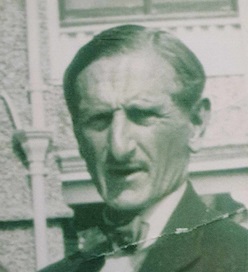
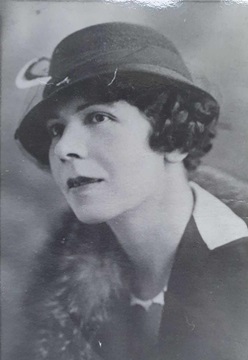
Back to: SingSurf home page Derek Morris
The Bonsall family were closely connected with mining in the Peak District and in Wales from at least 1750 until 1870.
Indeed, so well known was the family in mining circles that a recent book comments :-
"In 1870 Samuel Bonsall died after being captain at Seton [Mine] for no less than 33 years. His gravestone at Wetton, with the effigy of a hand holding a pick was erected by 178 subscribers as a token of their esteem and respect for his integrity.
Captain Samuel Bonsall was the nephew of Sir Thomas Bonsall, an eminent miner of his period who made a sizeable fortune in the lead mines of Wales during the second half of the Eighteenth Century."
The following notes are therefore complementary to the 'Records of the House of Bonsall' privately printed in 1903.
There is still scope for a more detailed account of the Bonsall contribution to Mining.
Mining of the lead, zinc and copper deposits of the Peak District has continued for over three hundred years and the Bonsall family was closely involved with the famous Ecton Mine from at least 1750 until 1870.
Ecton Hill is at Wetton in north Staffordshire on the west side of the Peak District and to the north east of Leek. The hill consists of a folded sequence of Carboniferous shales and limestones into which was intruded the vertical Ecton pipe with its rich collection of copper minerals. It is now an area of large open fields, limestone walls, pasture land and the scattered remains of the old mining days.
Ecton was one of the richest individual copper mines in Britain in the Eighteenth Century and was visited by many famous men, who would probably have been shown round the mine by one of the Bonsall brothers or perhaps by the Duke of Derbyshire who owned the mineral rights. Reportedly the Duke made a clear profit of 40% from the mine over a period of sixty years.
Thomas Bonsall of Bakewell must have been working in the Peak District Mines from at least 1750, if not earlier, and was widely recognised as an experienced miner because in 1771 he was recruited by the Company of Mine Adventurers to manage their mines in Wales. His story is told later.
From the Bonsall Records we know that Thomas had left his brothers Samuel and Joseph in Ecton and in 1789 he wrote of Ecton that "the water has deserted the deepest parts - a strange thing to tell". Indeed this was a very strange event for Ecton was the deepest mine in Britain and yet was surprisingly dry compared with other mines in the Peak District or Cornwall. The Ecton workings at 1300 feet needed only a simple 4 H.P. water operated pumping engine to cope with the drainage problems below adit level.
The Bonsall brothers at Ecton would have been closely involved with the introduction of several mining techniques which were new to Britain:
One can imagine the excitement in the Bonsall households as yet another new, idea was discussed or a visit by a famous enginner was anticipated. Their experience in implementing these new techniques would have made the Bonsall brothers pioneers in mining and their views on technical matters would have been respected.
However technical innovation does not always mean a good living and in 1797 Sir Thomas Bonsall wrote that:
"I lately had a letter from our Brother giving a melancholy account of 'Old Ecton', that the bottom has failed and is abandoned; that the 130 persons were lately dismissed who with many others flee to Canal Cutting and Cotton Works".
Samuel Bonsall was employed as Clerk or Agent on the Ecton Mine from 1837 until close to his death in 1870. During this time the changing fortunes of the mining business led to a succession of mining companies such as The Burgoyne Mining Company; The Ecton Copper Mining Company; The Ecton Hountain Mining Company; and The New Ecton Mining Company.
All of these companies employed Samuel Bonsall and he would have had a major hand at the end of his career in the construction of the nine foot diameter engine shaft built in 1862 to allow the mining of a rich six foot thick vein of galena that had been recently discovered. Samuel Bonsall was the Agent for this major construction and his salary was £96 per year.
I have not yet discovered why he was called Captain' Samuel Bonsall.
Sir Thomas Bonsall's father was George Bonsall who had married Mary Beardmore of Ecton. The Parish registers show that there were many Bonsalls living in the Peak District in the Eighteenth and Nineteenth Centuries and undoubtedly many of their descendants still live in the area.
In 1697 The Company of Mine Adventuress was formed to mine the famous Cwmsymlog mine, which lies north of the Rheidol river near Aberystwyth. This was a rich lead mine that was later to yield a profit of £11,500 between 1751 and 1771 to the great benefit of John Pugh Pryse of Gogerddan. Later the Revd. Isaac Bonsall was to marry a daughter of Edward Pryse, Archdeacon of Merionth and perhaps a descendant of the fortunate John Pryse.
In 1771 James Townsend secured the lease of the mine and entrusted its management to Thomas Bonsall of Bakewell. Under his direction the mine continued to be worked until 1793 when the work was in a poor state due to the bad mining methods and the mine was temporarily closed.
However by this time Thomas Bonsall was firmly established in a variety of mining ventures and in 1789 he wrote from Fron-Fraith to his brother Richard in America:-
" I have purchased a comfortable house... which by additions I have made a very good house. God has been very good unto me in bountifully bestowing a sufficiency of blessings of life. I have purchased estates in Cardiganshire to the amount of about £300 per annum clear, have some thousands out at interest secured by mortages and several thousand employed in different businesses. I have also to inform you that the same Providence has given me ten fine children - 6 sons and 4 daughters."
Vivien Bonsall was born in 1888 the great great grandson of Sir Thomas Bonsall.
Sir Thomas Bonsall has been described as "the most prominent figure in Cardiganshire mining circles during the last quarter of the 18th Century". By 1785 he was working at least fifteen mines, the majority being to the south of the River Rheidol. In 1786 alone the output of his mines was 2,337 tons of lead and zinc ore worth more than £25,000. As time passed his works increased in range and number and were usually successful. His most rewarding ventures were the eight Nanteos mines, especially Cwmystwyth. Bonsall paid a £30 per year rent and a ten per cent royalty. The mine yielded an annual profit of from £2000 to £3000 for many years and even when prices were at their lowest during the French Wars the gains were still a clear £1000 per year.
In 1797 Sir Thomas wrote "Mining in Cardingshire is at a very low ebb, the Principal works you formerly knew are mostly at a standstill, partly owing to their being much exhausted and partly to the war, which is a very severe check to the sale of lead and occasions a very low price. I continue to employ something about 120 people and raise at a rate of from 400 to 500 tons of lead; the profits are but small for the last three years".
The Cwmystwyth mine lies on the north side of the River Ystwyth about five miles by road from Devil's Bridge Station, 2 miles east Aberystwyth.
However, although Sir Thomas Bonsall died in May 1808 a wealthy man he was openly criticised for both his mining practices and his business methods. According to some "Mr. Bonsall has been the ruin of many Good Works in Cardingshire by not properly carrying them on". This was said of his work at the Llewernog mine, which he opened and robbed by working it as an open cast mine in order to raise 259 tons in the late 1780's and then abandoned it filled with rubbish.
At Cwmsymlog it was said that he and John Smith were responsible for the "Total Ruination of the Whole Range of the Work" because they took out all the pillers left to support weak parts of the roof, filled up vacant spaces in the mine so that they did not have to spend money raising waste material to the surface.
To balance these remarks Bonsall introduced the first ore-dressing machinery in Wales at his Cwmystwyth Mine, where it was inspected in 1798.
When a mine lease was drawing to an end, Thomas Bonsall seems deliberately to have set men to damage the most important entrances to the mine in order to discourage competitors and/or secure a reduction in the terms of a new lease. This was done at Cwmsymlog and at Cwmystwyth knowing that he would not get a renewal of the lease he set about extracting every particle of ore regardless of the damage being done to the mine and it's future prospects.
He also made a considerable profit by only allowing the miners to buy goods from his own shops at inflated prices; a practice that was to be made illegal!
Finally we can judge his position in society by his letter of 1796 :-
"It is my lot to be Sheriff of Cardinganshire this year, and on account of the perilous situation his 'Majesty' was lately in, on his passage to and from his Parliament, a meeting of the County was called by my advertisement and well attended. An address was wrote by myself, was produced, adopted and signed by about six hundred, carried up and presented by me, on which the King was pleased to confer on me the honour of Knighthood".
Passing away when my mother was six, Vivian is a bit of a mystery to me. Parts of his life are compiled from notes of a converstation between Mary, one of his daughters, and Amelia, a granddaughter, shortly before Mary passed away. Details and chronology are aproximate.


Vivian Bonsall was born in 1888 in Morben Hall, Machynlleth, Wales. The 1891 census tells us There
were seven people living in Morben Hall, Thomas William Bonsall (age 39) the head of the family,
Eleanor his wife (31), Vivian (3), Isabella vivians elder sister, and three servants, Jane a cook, Annie a nurse, and Jane a housemaid.
Family stories say his mother's name was Hawell and a "ghastly lady".
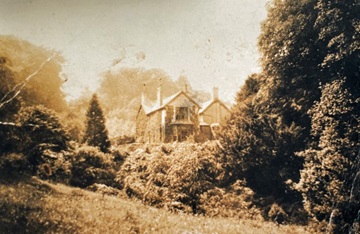
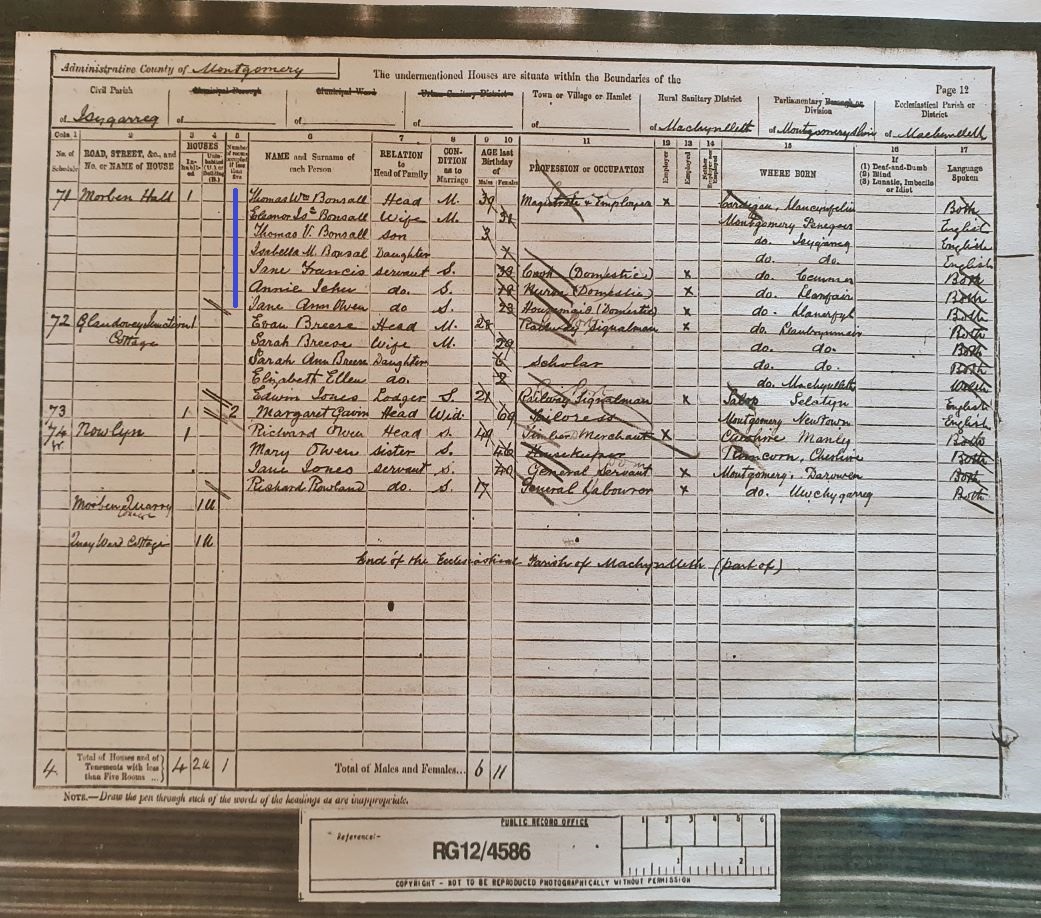
Vivian was phobic about blood so he fell out with his riding instructor and ran away, and his mother refused contact.
When the first world war broke out he join the Welsh Regiment, and a shell exploded burying him alive. He was given up for dead but was the only one alive. He was taken out of the war with shell shock and sent to Eastbourne to recuperate.
In 1924 he went to work in South Africa managing a tea plantation with
his first wife, Gwendolyn Williams. They traveled
out to Mombassa, on a freight ship
the Wangoni.
While there Gwendolyn Williams, had an affair with a manager at the plantation
and they divorced. His mother then denied all contact with him.
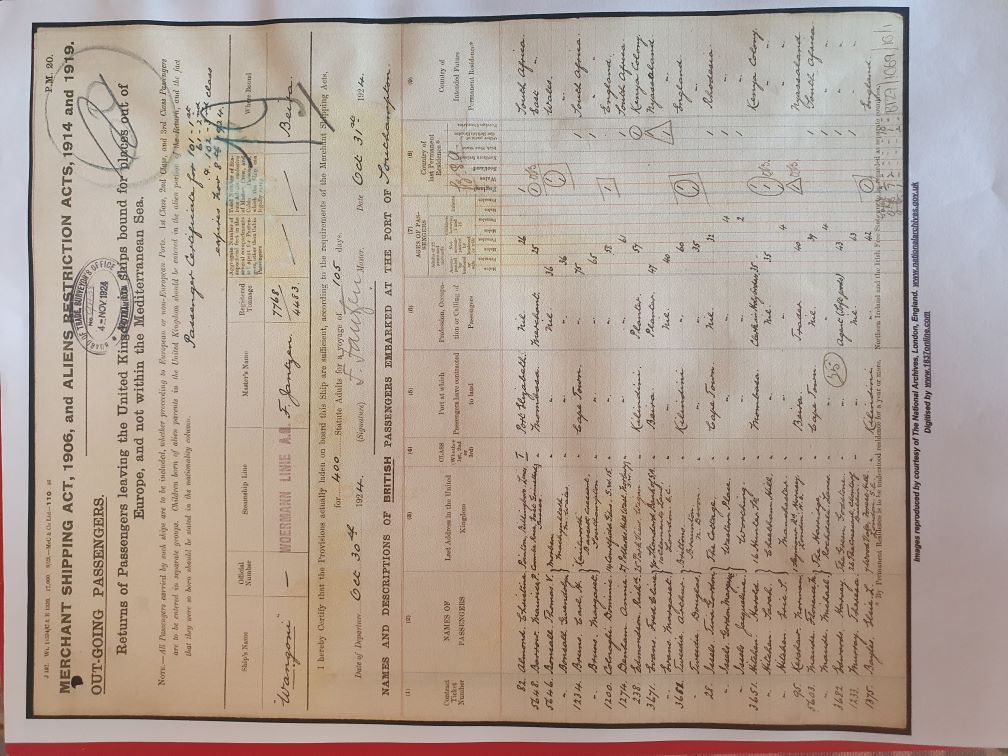
On return to Eastborne, he met Blanche, a 21 year old Swiss au-pair, in the Grand Hotel, who was looking after two small children of wealthy Jewish orchestral musician. The then married, and had three daughters, Mary, Marlene, and Madeline.
Vivian had become an alcoholic and died during the second world war, in 1942, while his daughters were still young. His small pension was stopped when he died, and a bursary from the family's uncle which lost value year by year, so times were hard for the family. A school teacher Mrs Key persuaded Marlene to take the schollarship exam for Southborne High School, which she passed.
Back to: SingSurf home page Derek Morris